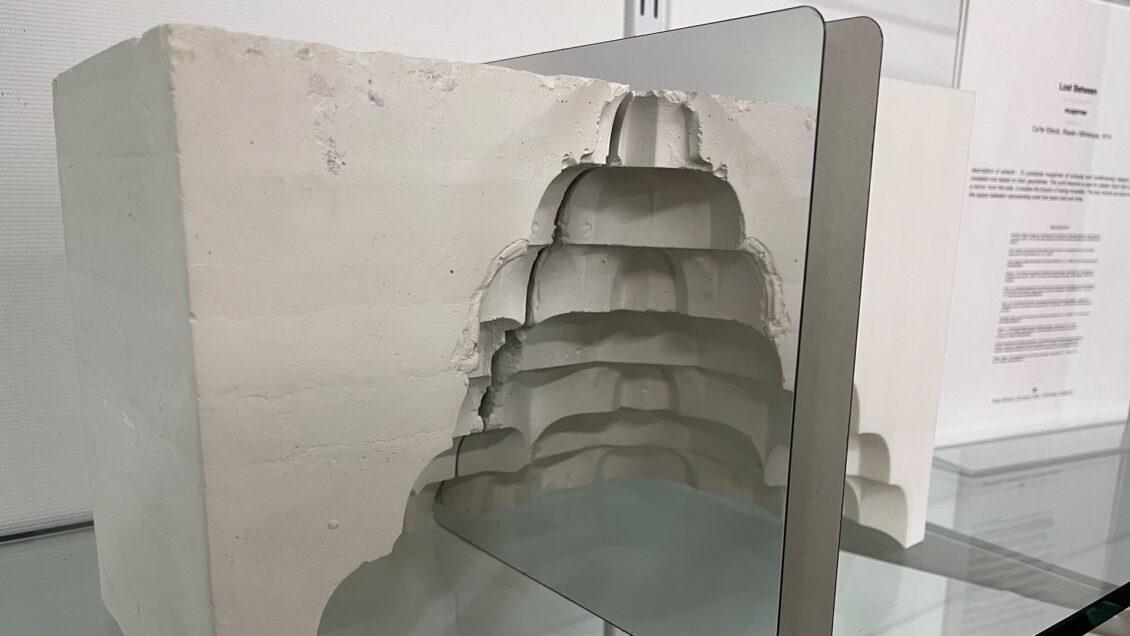Clemson architecture students and the Gunnin Architecture Library recently hosted an exhibition asking, “What is the role of representation in the history of architecture?”
Students in the ARCH 8600: History & Theory I class, alongside Assistant Professor Berrin Terim, analyzed the role of representation in writing the history of architecture and examined how the history of architecture is typically written from the viewpoint of Western society.
Using resources and databases provided by the Gunnin Architecture Library, students researched and studied historic architectural treatises and images to develop an alternative history of architecture.
“Rather than studying contemporary texts on historic buildings, students focused on historic architecture texts and followed their thread in representations of buildings cross-culturally and across time,” Terim explained. “By utilizing the library resources and databases, students conducted extensive research on texts and images to tell an alternative history of architecture.”
According to Ann Holderfield, the director of the Gunnin Architecture Library, all of the treatises and historic architecture texts were found in the Gunnin Architecture Library’s collection.
“Professor Terim’s assignment is based on the study and critique of architectural treatises,” explained Ann Holderfield, director of the Gunnin Architecture Library. “These treatises are a part of our collection and are displayed in the exhibit next to the creative work.”
Holderfield shared that while assisting the class, she also created instructions based on Terim’s assignment and an overview of how to use library resources in scholarly research.
“Professor Terim asked for me to provide research instruction to the students, so I created instructions based on the assignment and an overview about using library resources in scholarly research,” Holderfield said.
In showing the alternative history, students wrote a research paper, created visuals on a board and synthesized their research into artwork inspired by the historical architectural treatises.
Alternative History Artwork
The artwork ranges from illustration and plaster molds to illusions, 3D images and multi-sensory experiences.





According to Terim, the way buildings, models, and drawings are represented and how the information about them is ordered is how we make knowledge, and that knowledge is bound to the era in which it was created, with all of the unconscious agendas and biases embedded within it.
“Representation is the architect’s mother tongue. If we have learned to communicate a future building through making artifacts, why not use the same language for critical thinking to communicate alternative histories we want to write?” Terim said.
Holderfield shared that seeing the final creative works during the final review last semester was exciting. “I love that you have to step really close to the artworks in the exhibit to experience them and to understand what the students are conceptually dealing with,” she explained. “You need to look through the text, gaze down into the mirrored pyramid, or notice the subtle pink or green ‘flame’ on the wall.”
Using library resources
Featured alongside the artwork, bibliographies and architectural treatises are displayed in the exhibit. According to Holderfield, featuring bibliographies in the exhibit and displays are an effective way to display the scholarly research process in a visual way.
The exhibit is on display outside of the Gunnin Architecture Library will be available to view until March 8, and can be experienced in a digital format through the Libraries website. While not all of the original artwork is on display, some of the pieces represent the more experimental work shared in the final review.
“I feel like this exhibit exemplifies the kind of partnership and support that the Gunnin Architecture Library offers to each program in the College of Architecture, Art and Construction,” Holderfield said.
Get in touch and we will connect you with the author or another expert.
Or email us at news@clemson.edu

